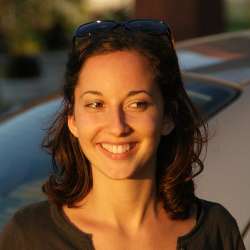Two years after the death of Patrick Dupond, the Opéra de Paris staged a sumptuous gala evening at the Palais Garnier to pay tribute to the principal dancer and director of its Ballet from 1990 to 1995. A figure who was as much a cornerstone of the Paris Opera as he was a subversive, Dupond has shaped some roles in the repertoire and inspired generations of dancers. After the screening of a tribute film and the Ballet's défilé, three emblematic works from Dupond's artistic career were reinterpreted by the company's current dancers in an atmosphere that was as moving as it was virtuosic. With a strong emphasis on young dancers, the evening was an opportunity to get excited about the young talents of the company such as dancers Germain Louvet, Hugo Marchand, Paul Marque, Valentine Colasante, and also of the very young Guillaume Diop and Inès McIntosh.
The programme opened with Vaslaw, a doubly emblematic role for Patrick Dupond: created for him by John Neumeier, it was also the choreography for which he was appointed principal dancer in 1980, at the early age of 21. An intimate reverie accompanied by a piano on stage, the piece projects the inner monologue of the Russian choreographer Vaslav Nijinsky, brought to life on stage practising exercises in strength and flexibility, but also possessed by prolific choreographic research. Couples of dancers populate his daydreams, while he mimes the characteristic poses of his creations (the feet turned-in of The Rite of Spring, the sad clown face of Petrushka, the suggestive hands of Faun). Marc Moreau, who interpreted both Nijinsky and Dupond interpreting Nijinsky, offered a dance full of grace. Alongside him, the pas-de-deux of Roxane Stojanov with Florent Melac and Laura Hecquet with Arthus Raveau err on the smooth side.
To the penetrating music of Gustav Mahler, superbly sung by Sean Michael Plumb, Maurice Béjart's choreography of Le Chant du compagnon errant marks a second milestone in Dupond's career. A male duet that he performed with Rudolf Nureyev in 1990, the year the torch was passed between the two dancers at the head of the Ballet de l'Opéra, and later with his childhood friend Jean-Marie Didière, the piece tells the story of the romantic companionship between two men called by death. With incredible presence, Germain Louvet and Hugo Marchand, a charismatic duo of 29-year old étoile dancers who also trained together, give substance to this solemn dialogue. Louvet, who plays the romantic side of the couple, offers a supple and lyrical dance in a sensitive body. Marchand is wilder, with jumps that are both ample and restrained, and plays a more dominant counterpoint. We are left hanging on their intense exchange, both serious and delicate.
We end on a more festive note with the revival of a classic of Paris Opera galas: Harald Lander's Études, first performed by Dupond in 1980. Études is the transposition of a classical dance class into a grandiose ballet. It moves from the warm-up exercises at the barre to the more robust technique in the middle. Carl Czerny's piano studies (a regular of every dance studio) are turned into an orchestral version with great ceremony. The ballet builds to an exhilarating crescendo, beginning at the barre in semi-darkness where one can only make out pairs of legs in full exercise, and ending with a fortissimo finale danced in unison. A brilliant trio of soloists leads the way: Valentine Colasante, a brilliant technician, who offers impeccable variations en pointe and speedy pirouettes, Paul Marque, whose elegant virtuosity really shines in this type of stylistic exercise, as well as Guillaume Diop, full of energy in the jumps, and whose minor errors are eclipsed by his charismatic presence. Études also puts a welcome spotlight on the women's corps de ballet, which has several particularly promising dancers, including Inès McIntosh, whose pointe work is stunning.




